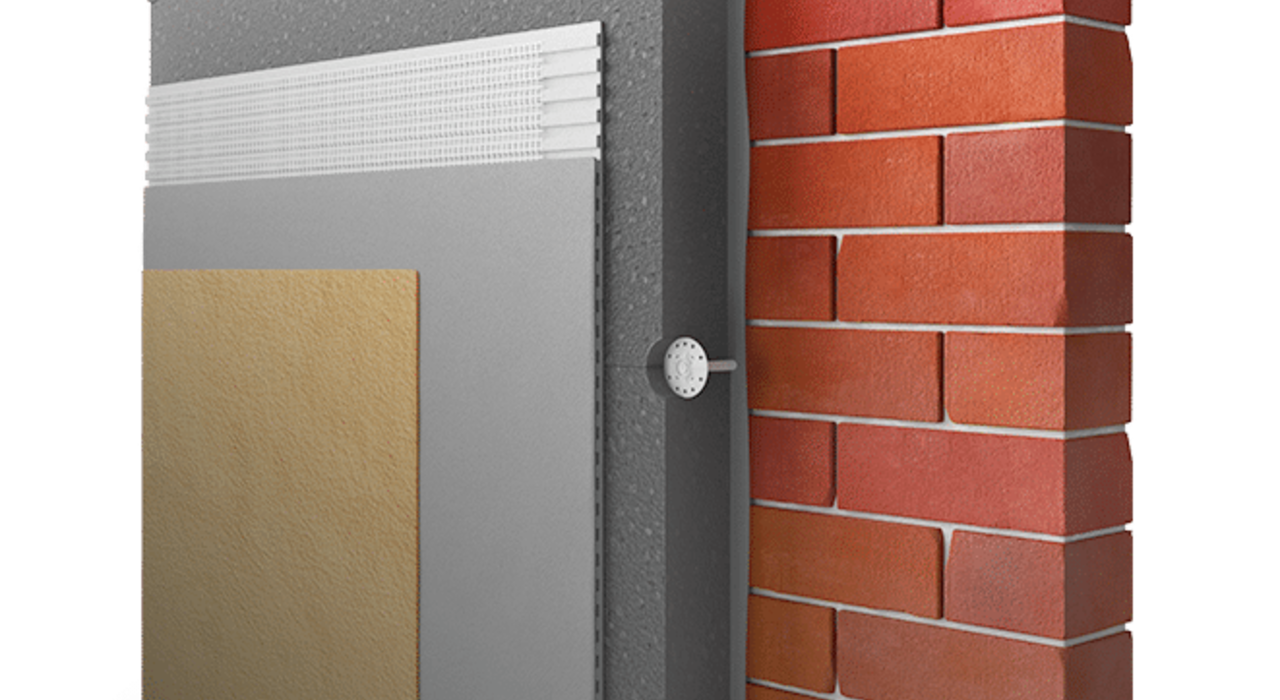
EPS insulation is one of the most popular external wall insulation materials available on the market. It is great for use in industrial, commercial, and residential insulation projects. There are several reasons for this. Firstly, it is an extremely cost-effective insulation option. It is also a great long-term cost-saving solution for reasons which we will discuss throughout this blog!
In this blog, we will discuss the various benefits of EPS insulation, and why you might want to consider using it as your insulation material of choice! We will discuss some other queries you might have regarding the topic – including ‘what is EPS’, ‘what is the difference between EPS and XPS insulation’, ‘Is EPS insulation waterproof’, and ‘can EPS be used for internal insulation?’
Read on to find out more about EPS insulation boards!
What is EPS insulation Board?
Before discussing the various properties of EPS, it is worth exploring what EPS actually is, its composition, and its uses.
So, EPS insulation board is a type of solid wall insulation material that is used to add a high-performance thermal insulation layer at the centre of your external wall system. They are comprised of Expanded Polystyrene, a type of foam plastic made from solid beads of polystyrene.
At EWI Store, our EPS boards come in a standard size of 1200mm x 600mm but come in a range of thicknesses. For example, 1 eps insulation board can be purchased in thicknesses ranging from 20mm-200mm.
EPS can be used in a multitude of insulation projects as it is an extremely versatile insulation material. This means that it is well suited to all sorts of projects, and a range of different substrate surfaces. For example, EPS boards are compatible with masonry and timber substrates.
When applying EPS, we recommend you use a dual fixing method to fix the boards to the substrate. This typically involves applying adhesive to the board and then using fixings to secure the hold.
Benefits of EPS Insulation
EPS is a really great insulation option if you’re looking for a cost-effective, lightweight material for your EWI project. We will take a look at some of the various benefits of this product below:
- Cost-effective. An affordable insulation option that saves you money on heating expenses in the long run!
- Highly lightweight, meaning that it is easily transportable, easy to install, and simple to cut to any shape necessary.
- EPS has just as good thermal properties as some of the more expensive insulation materials. It will significantly improve the thermal capabilities of your property.
- Absorbs sound for good acoustic insulation, making it ideal for urban areas.
- Long-term investment. Lowers your gas costs over time.
- Versatile and suited to a range of insulation projects and fixings.
- Environmentally friendly and sustainable insulation option.
- Water-resistant for increased protection from the elements and mildew.
- Non-breathable, therefore well suited for use with thin coat renders. Especially the EWI-075 Silicone Render.
What is the difference between EPS and XPS insulation?
You might have heard of XPS insulation when considering your insulation material options. But what is the difference between EPS and XPS insulation?
XPS and EPS are often confused because they are made from the same polystyrene resin base. However, the manufacturing process is different, which produces slightly different insulation properties.
EPS stands for expanded polystyrene, whereas XPS stands for extruded polystyrene. Because of their differing compositions, XPS and EPS are better suited to different types of projects. For example, XPS has stronger compression strength than EPS. Whereas they both provide relatively similar levels of thermal insulation to your home.
In general, EPS is less expensive than XPS, meaning EPS is a great option if you’re looking to properly insulate your property without breaking the bank!
Is EPS insulation waterproof?
EPS insulation is an incredibly effective insulation board material to use. One of the key reasons for this is that it is highly water-resistant.
Its water resistance is part of what makes EPS insulation board an excellent option for, not only insulating your home, but for protecting it from the elements. This means that you can significantly reduce the chance of incurring water damage to your property's external wall structure.
Therefore, EPS insulation is a great option if you’re looking to protect your home, keeping the surfaces healthy and free from mildew (organic growth)! This, in turn, will benefit your health as long-term exposure to mould can be harmful.
You can further add to the waterproofing properties of your home by using a render that is highly waterproof. A great option in this instance is either the Nano Drex Silicone Render or the Premium Bio Silicone Render. While the Nano Drex is our most advanced and high performance rendering solution, the premium bio has been designed specifically with waterproofing in mind! You can read more about choosing your perfect silicone render in our recent blog here!
Can EPS be used for internal insulation?
Having discussed the various benefits of EPS insulation, you might be wondering if you can use it for internal wall insulation as well as external?
The answer is yes, you can also use EPS as an internal insulation method. The versatility of this product means it makes an effective internal insulation material as well as external.
That said, it is worth noting that external wall insulation tends to be a more effective insulation solution as it achieves higher levels of insulation without the risk of moisture gathering within the wall structures.
Find out more!
Have you seen our other insulation materials? View our full range of solid wall insulation materials here. The full range includes EPS, XPS, Mineral Wool, and Kingspan K5.
You can read about the differences between these types of insulation materials in one of our previous blogs: 'mineral wool vs EPS vs Kingspan K5 vs Wood Fibre'.
This way, you can weigh up your options and the different pros and cons of each!
